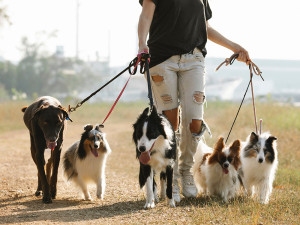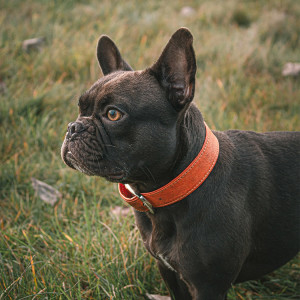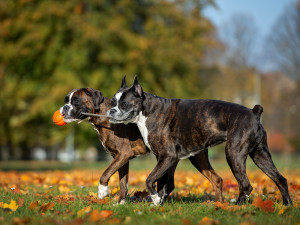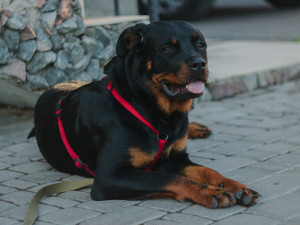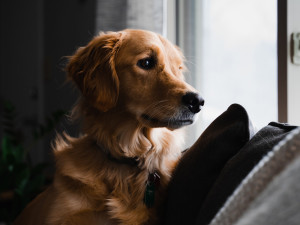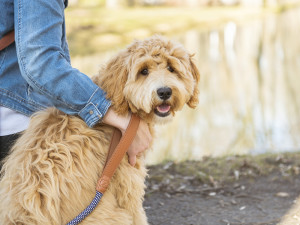Why Breed Standards Don’t Work
Breeders, judges, and historians talk about breed standards — learn how they’re supposed to work and why they don’t.
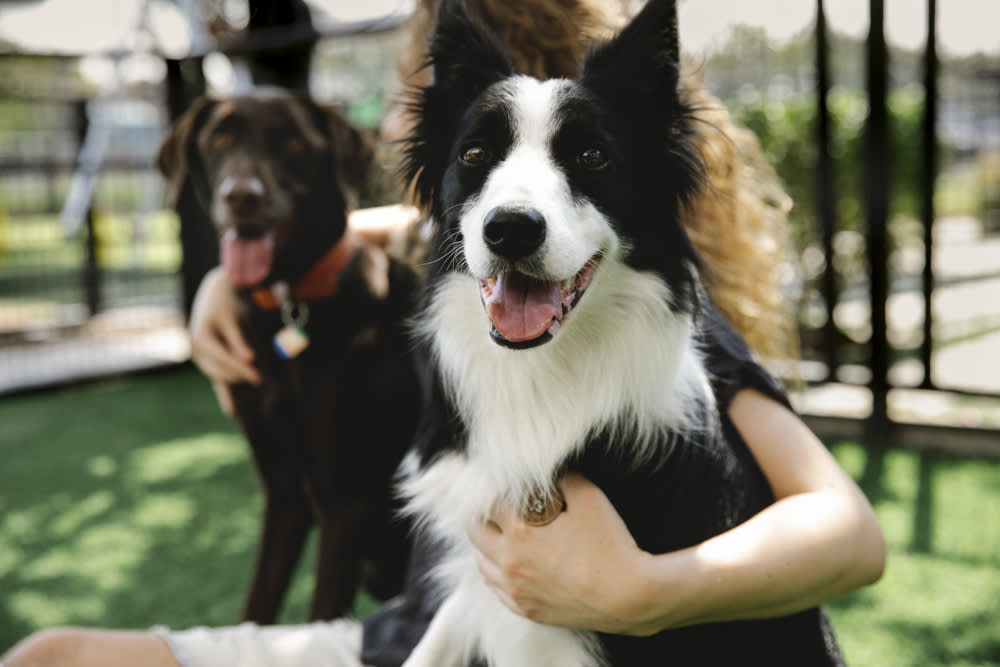
Share Article
Of the 400 breeds recognized worldwide today, more than two-thirds were created in the last 150 years. There’s no doubt that dog breed shows and their requisite breed standard for appearance played a big part in subdividing breeds, shrinking gene pools, and diminishing genetic diversity. Breed appearance standards are indeed powerful. As a tool, language plays an important role by which innovation — in this case, of a sentient human-bred domestic animal — is further developed. Or, as the AKC says, refined. Learn how breed standards have influenced how we regard, understand, and think about dogs.
Unfolding Dog Genetics
In the world of mammals, the domestic dog — Canis lupus familiaris, a subspecies of the gray wolf — reigns as the most morphologically diverse. On one end, there’s the 155-pound South Russian Ovcharka, and on the other, the seven-pound Silky Terrier. This incredible variety can be attributed partly to the dog’s basic template, which can be customized by manipulating an unexpectedly small number of genes.
For instance, 95 percent of all five canine fur textures and lengths (the Afghan Hound and Curly-Coated Retriever curiously excepted) are orchestrated by three genes. And just six or seven locations in a dog’s genome account for nearly 80 percent of dogs’ vast size and weight differences. (In humans, these genes number in the hundreds, if not thousands). A single mutation, shared by 14 diminutive breeds, determines that a dog will be small, and another is responsible for the long-bodied, short-legged nature of numerous dwarf breeds.
Clearly, dog breeds aren’t quite as unique as you might have thought. Dog traitsopens in new tab come in packages. Flip a switch to make the legs more slender, and the skull will narrow as well. Turn down the volume on pigment and the chance of deafness increases.
Those who bred dogs had long known that traits were related, but there was little understanding of how those relationships worked; nor was there much concern. Dogs were bred for skills useful in a practical world. Once breed exhibitions became fashionable and working dogs were awarded championships based strictly on appearance, all this changed.
Associating Breed and Behavior
In 1866, John Henry Walsh (writing under the pseudonym “Stonehenge”), editor of The Field, the most influential hunting and kennel journal in England, was the first to describe a breed’s physical characteristics with phrases that he believed were equivalent to its field ability. A bird dog judged perfect to a well-written breed standard would, by the logic of the day, perform perfectly in the field.
At the time, horsemen and sportsmen were the dog influencers (women became active later), and many of the arcane descriptions in breed standards are borrowed from those fields. Today, breed standards serve three purposes: assessment in competition; delineation of unique qualities in different breeds, some very much alike; and maintenance of breed similarity throughout the world.

The question is, what happens to purebred dogs when language, intrinsically fluid and inexact, is used to suspend change in morphology and behavior? In speaking with experienced American Kennel Club (AKC) breeders, specialty judges, and breed historians, we gain some insight into specific ways that a standardized lexicon can influence change in pedigreed dogs far beyond what is intended.
Dogs in Translation
Breed standard translations are more like corrections or clarifications. When standards are clarified, they usually get longer and, consequently, more exclusive. A standard that calls for feet to be “round, compact, catlike, standing well upon the toe pads,” is more restrictive than one that says feet must be “close, round and firm.” Revisionists tread cautiously because an imprecisely rephrased standard can have an impact on a breed’s genetic diversity.
Amending a standard for any reason is controversial. As one Greyhound breeder observed, “The torch handed to us was the perfect coursing dog. Our standard is taken word for word from what was written in the 1860s. If we added more words to make it more explicit, it may end up being a Greyhound different than the one each one of us has in our head.”
But progress necessitates change. A handful of words differentiate an apple, an orange, or a pear, but 13 varieties of apples require a larger lexicon. In his 1576 treatise, Of Englishe Dogges: The Diversities, the Names, the Natures, and the Properties, cynologist John Caius described the generic land Spaniel in 58 words: “The most part of their skins are white and if they be marked with any spots, they are commonly red, and somewhat great therewithal, the hairs not growing in such thickness but that the mixture of them may easily be perceived. Other some of them be reddish and blackish, but of that sort there be but a few.” Today, Caius’s dog has morphed into 13 flushing Spaniel breeds. The Field Spaniel standard uses 973 words, short in comparison to the English Springer Spaniel standard, a 2,040 word descriptor.
Occasionally, words are added to explain what something is not. As one breed standard committee member noted, “There were lots of questions from judges about the preferred shape of the eye opening. So we said it’s acceptable as long as it’s not this, that, or the other thing.” And at a California dog show, pointing to Mastiffs benched only a few feet from his St. Bernards, an exhibitor told me, “Sometimes breed clubs have to lengthen standards to differentiate their breeds from others so similar that, if marked differently, could be shown as Saints.”
When Words Fail
At the Westminster dog show, AKC VIPs sipped their drinks and talked candidly about breed standards. A Doberman breeder, specialty, and all-breed judge opined, “When people bred to the standard, the animal changed and became what the words described. Also, some groups wrote the standard and have not been able to breed to that ideal, so now, they change the nuance of the words to fit the breed ideal. Making the dogs fit the words, and not vice-versa, is wrong.”
Sometimes breed standards include terms that are subjective or indefinite. Or as one judge said, “If the standard calls for a short muzzle, judges select dogs based on the shortest muzzles in the ring. The breed’s muzzle gets shorter and shorter. So you have to ask, ‘Shorter than what?’” This leads to the problems currently associated with brachycephalic breeds.
Some breeders get so fixated on one attribute of the traditional standard that they are willing to sacrifice something more important. “For example, they may create a broad head but are willing to accept shorter legs and a longer back in order to do so,” another judge observed.
Breed standards, like all nomenclature, are subject to the rules of language. Like the dog it describes, vocabulary is deceptively capricious and unexpectedly fluid. A good example is size. Big breeds are getting bigger. As I was told by a breed historian in reference to St. Bernards, “What was bred to be powerful and strong in 1900 would not be considered powerful and strong today. Like an automobile in 1915, it was powerful then but not compared to now.” If a standard describes a breed as strong and powerful, the ideal dog gets bigger.
Rather than hack away at standards, some breed clubs hold seminars for judges in which contemporary nuances of an indefinite vocabulary are refined. Others reluctantly reword phrases to accommodate inexperienced newcomers. Some clubs don’t revise words, but instead, reinterpret their meanings. Take English Bulldogs, for example. As an owner of one of these stocky dogs remarked, “The interpretation of words has changed. The Victorian [Bull]dog was a transition dog, less bulky, less massive, taller, leaner, and is now thicker and more compact.” Another handler observed that “one of the issues in the standard is weight. It calls for 45 to 50 pounds. But it has no height restriction, so a higher-station dog might be thinner.” The 1910 dog was a much taller and leaner dog compared to today’s stout fireplug variety, but both are considered to have been bred correctly to the standard.
You can have the same words in several breed standards, but that don’t mean the same thing. Take the word ‘almond-shaped’ to describe the eyes of a German Shepherd Dog — if you look at other breed standards, both the Collie and American Cocker Spaniel call for almond-shaped eyes. Even though the Collie has a small triangular eye and Cocker Spaniel’s eye bulges out from the skull.
Breeding for Appearance Over Behavior
The AKC considers itself a club of clubs. Owners intent on breed registration must first demonstrate that a majority of breeders are interested in establishing a national breed club. Who gets to be in that club is at the heart of a mounting number of controversies.
Labrador Retrievers
In 1994, the AKC Labrador Retriever standard was revised to exclude dogs less than 22 inches at the withers. Some breeders whose dogs no longer met the standard were part of an $11 million class-action suit against the AKC Labrador Retriever Parent Club (the national organization designated by AKC to represent the breed), claiming that height restrictions excluding shorter dogs no longer described the Labrador Retriever: if you make a bigger dog, you make a different dog. A litigant told me, “It’s perfectly reasonable to change a breed, but the dog should have a different name.” They tried and failed to trademark the name Labrador Retriever; the judge sided with the AKC parent club.
The shorter-legged, more compact field-bred Lab continues to be shown in Canada, the UK and other countries that don’t disqualify individuals based on size. In the U.S., conformation and companion Labs are getting increasingly larger. Will diseases linked to large size compromise the American line? Time will tell.
Border Collies
The Border Collie war began in 1988, when the American Border Collie Association and others heard rumblings that some wanted to register the breed for conformation showing, which requires a breed standard. This idea didn’t go over well with herding trial enthusiasts because a Border Collie is what it does, not what it looks like. Any dog can enter an open sheepdog trial. There are no age, size, color, shape, or breed restrictions, and registration is not required. Unlike registered purebreds, whose lineage must be proven in ancient studbooks, many Border Collie champions are registered on merit (ROM). In theory, a Pomeranian who could prove its worth at a sheepdog trial could, by performance, be called a Border Collie.
In the minds of many, AKC conformation specifications threatened 200 years of breeding for performance, not looks. Led by Donald McCaig, the group prepared for battle. McCaig worte: “Hands off the Border Collie! We own Border Collies. Our dogs are companion dogs, obedience dogs, and livestock-herding dogs. For hundreds of years, Border Collies have been bred to strict performance standards and today, they’re the soundest, most trainable dogs in the world. The AKC wants to push them out of the Miscellaneous Class and into the show ring. They seek a conformation standard [appearance standard] for the breed. We, the officers of every single legitimate national, regional, and state Border Collie association, reject conformation breeding. Too often, the show ring fattens the puppy mills and creates unsound dogs. We will not permit the AKC to ruin our dogs.”
They filed to legally trademark the name but, like the Lab litigants, lost in court. In 1997, the first Border Collie was shown in conformation at Westminster. In interviewing a handler/owner who had been instrumental in writing the standard. She said, looking visibly distraught, “Right before you got here, a prominent breeder came by and said he will breed a dog with the head held higher. The head has to do with movement in the field, in making eye contact with the sheep, the pattern of behavior that has evolved from two centuries of work. Now I regret having fought so hard for this. The standard should not threaten the dog as a working animal, but I believe it now will.”
As a consequence of the acrimonious Border Collie war, few working dog breeders had a desire to become specialty judges, so the fate of the conformation dog was left in the hands of generalist judges who lacked sheepdog trial experience. As predicted, the standard created a split type: working dogs continue to be a rag-tag group, dissimilar in shape, size and color, but the same in their relentless determination to move sheep from one place to another. In contrast, AKC dogs look very similar, but their ability to herd sheep is open to question. Are both types called Border Collies? Formally, yes, but the AKC show Border Collie is widely, popularly and even affectionately known as the “Barbie Collie” by some: pretty as a picture but as blandly attractive and vacuous as the doll from which the name derives.
Jack Russell Terriers
At about the same time the Border Collie war was raging, AKC enthusiasts saw an opportunity to register the Jack Russell Terrier (JRT), an irascible, independent dog with an intense work ethic, extremely diverse genome, and phenotype as dissimilar as that of the Border Collie. Many Jack Russell Terrier breeders vehemently opposed the action, claiming that the breed’s physical and working characteristics would be jeopardized by this move. Nevertheless, the splinter group formed the requisite national breed club, named itself the Jack Russell Terrier Breeders Association (JRTBA) and gained AKC recognition in 2001.
A lawsuit ensued. After an expensive court battle, the name Jack Russell Terrier was awarded to the working phenotype and the AKC changed the conformation dog’s name to Parson Russell Terrier. The AKC parent club is now the Parson Russell Terrier Association of America. “The Jack Russell Terrier is a feisty, very aggressive, very tough dog. But middle-class urbanites don’t really want that kind of dog. They want a dog that will be a good pet,” says author Alston Chase, who bred the working terrier since the 1970s.
The public took notice of the rather obscure breed when it became a media darling in the 1980s. The breed was misrepresented as a mischievous lap dog on shows like the NBC sitcom Frasier. Surprised and disappointed by their dogs’ ornery personalities and exercise requirements, urban pet owners abandoned JRTs at shelters in record numbers.
According to Chase, one of only a handful of people in the U.S. continuing to breed the old-fashioned dog, “We’re doing what we can to prevent extinction of the original breed, but people aren’t in love with the value of diversity in the dog. They want dogs that look alike.”
Now, the old-fashioned Jack Russell Terrier can hardly be found. Like the Old English Bulldog who faded away with the passage of the 1835 Cruelty to Animals Act and the Wolfhound who died out with the demise of the wolf in the British Isles, the pre-AKC JRT will likely disappear as well.
By breeding for conformation and appearance, breeders may be breeding away from desirable behavior, even putting alleles (forms of a gene) at risk for extinction. It’s all up to chance which genes are swept up.
Jane Brackman, PhD
Jane Brackman, PhD, is an authority on the cultural history of canine domestication and the author of two books on pets in 19th-century America.
Related articles
![Two boxer dogs playing with a ball together in the park]()
Docked Tails Play a Role in Dog Communication
Looks aren’t everything, but they can talk.
![A Rottweiler dog wearing a bright red harness leash while sitting on the stone ground outside]()
How to Help Rottweilers Reach Their Senior Years
Tracking the oldest living Rottweilers.
![golden retriever dog looks out window]()
Cancer in Dogs: A Primer on Canine Cancers
The word cancer can set alarm bells, turn down the volume by brushing up on cancer basics.
![designer dog breed Labradoodle on a leash looking at the camera]()
From Goldendoodles to Puggles — the Truth About “Designer Dogs”
Do your research. Know the facts.
